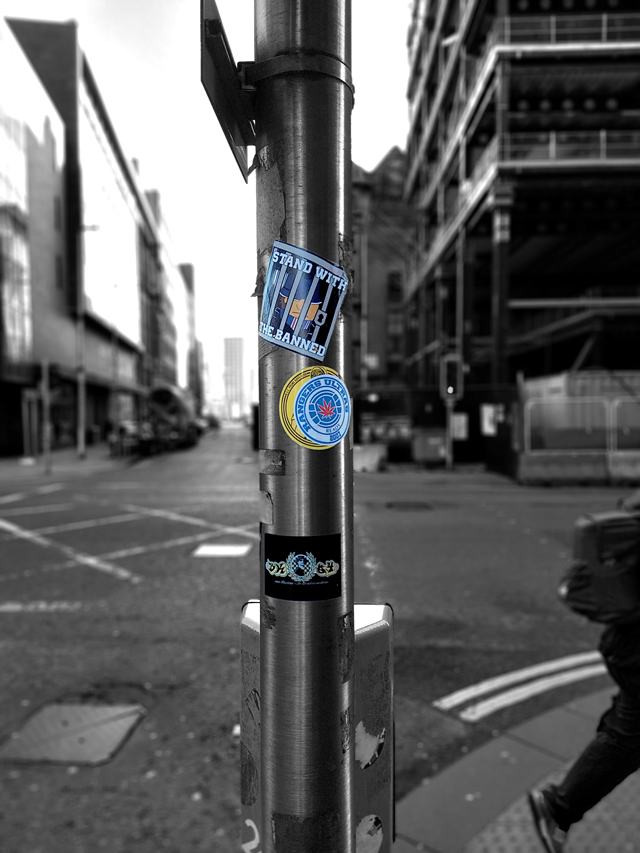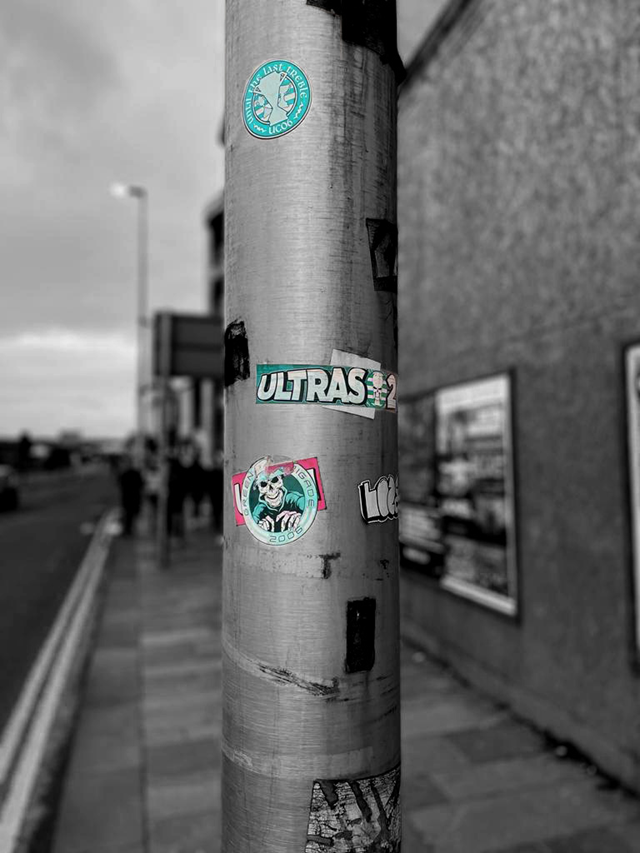I’ve always been fascinated by the presence of football stickers within the city space. Not evident just in Glasgow, but all over the country, in my hometown and the other places I visit. Whilst this isn’t necessarily a new phenomenon, I’ve become more cognisant of their existence as I’ve undertaken those numerous lockdown walks and upon my return to the city. Perhaps this is due to my lifelong relationship with football. They simply stand out to me and are invisible to another.
Football has a major influence on the social history and culture across Scotland, but most significantly in Glasgow. From an anthropological point of view, the stickers are territorial. A fan marking their team’s place. From a social geography angle, it’s interesting to see where the fans of teams have been. In prominent city-centre locations, the stickers are quickly removed, like graffiti. Perhaps a metaphor for the city and its continued push to rebrand itself and cover up the issues that plague it. Yet elsewhere in less frequented areas, the stickers are free to stay; left to peel away, dissolve, discolour and overlaid by another. The act of “sticking” is a microaggression between rival fans. A subtle statement to those who care to notice. Stickers from other teams across Europe are also observable showing that it isn’t an action solely attributed to Glasgow.
For me, this is evocative of the tribal nature of football culture. But also, the constant religious and political ideologies that underlie the city, ingrained in its history, yet are rarely seen. Much of which, I hope this will soon begin to disappear over time like the dissolving of the stickers, and the rivalry will be left to simply footballing merit.


